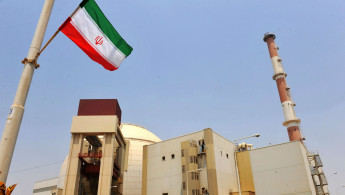Iran 'dismantling' centrifuges from nuclear plants
Iran has begun dismantling parts of its nuclear programme, as agreed under July's landmark deal with major powers, a UN atomic watchdog report showed Wednesday.
Tehran "has started removing centrifuges and related infrastructure" at both the Natanz and Fordo enrichment facilities, said the restricted International Atomic Energy Agency quarterly report, seen by AFP.
Under the 14 July deal that ended a potentially dangerous decade-long standoff, Iran undertook to dramatically scale back its nuclear programme.
These steps, coupled with increased UN oversight, are aimed at making it much more difficult for Iran to develop nuclear weapons, an aim it has always denied.
They include slashing by two-thirds the number of centrifuges, machines which can "enrich" or purify uranium to make it suitable for peaceful uses but also for a nuclear weapon.
In addition, Iran pledged to change the design of a new reactor at Arak in order to reduce sharply the amount of plutonium produced, the alternative to uranium for a bomb.
In return, the six major powers - the United States, Russia, China, Britain, France and Germany - have agreed to lift sanctions imposed on the Islamic republic.
The accord was formally adopted by all parties on October 18 and "Implementation Day", when it enters into force, is expected in the coming weeks or months.
The United States and Europe began preparing to lift the trade sanctions that have hobbled the Iranian economy in October, as a historic nuclear deal came into effect.
The procedure to lift the embargo began 90 days after the UN Security Council endorsed the accord signed in Vienna in July, a milestone referred to as "Adoption Day".
Although the nuclear deal marked an important landmark is warming of relations between the US and Iran.
Diplomatic relations were frozen since 1979, when Iranian Islamist revolutionaries occupied the US embassy in Tehran and held staff hostage for 444 days.





 Follow the Middle East's top stories in English at The New Arab on Google News
Follow the Middle East's top stories in English at The New Arab on Google News
![22 Arab countries at COP29 have rejected the targeting of fossil fuels [Getty]](/sites/default/files/styles/image_330x185/public/2024-11/GettyImages-2184289638.jpg?h=199d8c1f&itok=ptHl5bec)
![Dozens of people turned out for the funerals [Getty]](/sites/default/files/styles/image_330x185/public/2024-11/GettyImages-2185229760.jpg?h=e7c891e8&itok=1bctDcE6)
![The UAE is widely suspected of arming the RSF militia [Getty]](/sites/default/files/styles/image_330x185/public/2024-11/GettyImages-472529908.jpg?h=69f2b9d0&itok=Yauw3YTG)